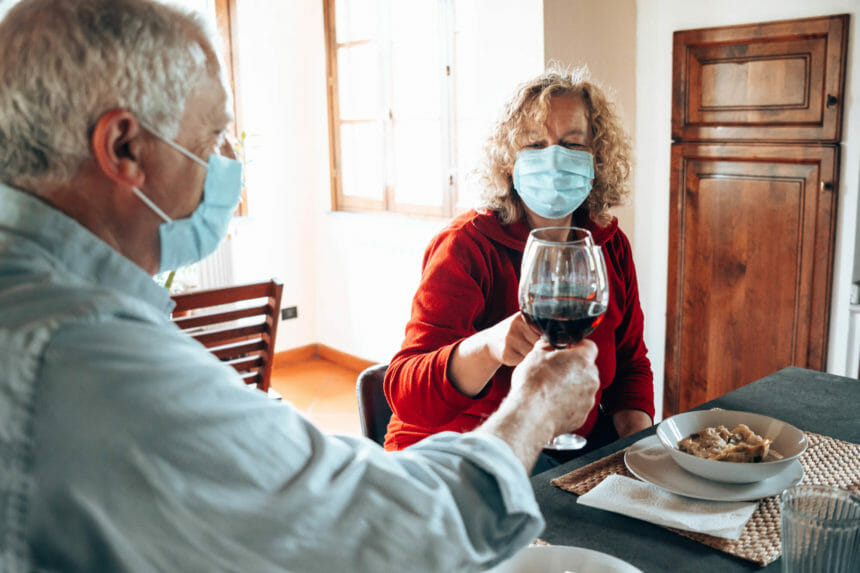
Eighty-one percent of senior living and care providers responding to a recent survey say that they are encouraging their residents not to travel during the upcoming holidays, due to the pandemic.
The LeadingAge “Community Holiday Planning Survey” revealed a variety of approaches that operators are taking to limit the spread of the coronavirus. Responses from 113 affordable senior housing, independent living, assisted living and life plan / continuing care retirement communities as well as nursing homes indicate that most communities are urging residents not to travel and, for residents and staff members who leave the building, are recommending or requiring self-quarantine upon return from the holiday.
Other marginally endorsed solutions included encouraging travel only in special circumstances (9%), suggesting local travel only (5%) or offering no guidance or information at all regarding Thanksgiving travel (5%).
Based on Centers for Disease Control and Prevention-issued advisories about Thanksgiving and holiday travel risks, LeadingAge members who responded to the survey expressed concern that both residents and staff members may be at risk of COVID-19 exposure at family gatherings, especially those held indoors with marginal COVID protections and blending families from multiple households.
In some cases, states are beginning to implement travel restrictions, requiring travelers from other states to self-quarantine upon arrival or return. The CDC offers After You Travel recommendations. LeadingAge also reviewed CDC and state Thanksgiving travel guidance.
Most survey respondents (55%) said they are implementing a combination approach of asking residents to disclose their travel plans, self-quarantine and be tested for COVID-19 upon their return to a community. Thirty-five percent said they would ask or require residents to self-quarantine upon their return, and 6% said they are issuing no recommendations or requirements. Only 1% said they would ask residents to disclose their travel plans.
When it comes to accommodating family visits within communities, respondents shared a variety of solutions ranging from not allowing visitors to welcoming small numbers of people in a shared space. Respondents from several communities said they are planning to offer Thanksgiving meal delivery for residents and a limited number of guests.
Almost half of respondents (49%) said they are discouraging residents from inviting guests onto their properties for the holidays, except in special circumstances, including end-of-life, essential caregiver or compassionate care situations. Other solutions included encouraging residents to have a limited number of guests in their units (20%) or having a small number of guests in an outdoor setting (15%). Only 1% said they were welcoming residents’ visitors into their dining rooms.
When it comes to staff members, survey respondents said they are looking at solutions ranging from providing them with CDC advisories and information, to requiring self-quarantining before a return to work after holiday travel.
A majority of survey respondents (72%) said they are offering CDC information and travel advisories to staff about Thanksgiving travel and gatherings. Staff members planning to gather locally with family will be able to return to work with no restrictions at 12% of survey respondents’ communities. Nine percent, however, said that staff members will be required to self-quarantine if they travel out of state, and 4% stipulated that staff members who gather with family outside of their household will be required to self-quarantine. A small group (3%) stated that staff members may travel out of state with no return-to-work restrictions.
The debate over how to compensate staff members for leave ranged from requiring negative test results to self-quarantine paid by Family and Medical Leave Act or vacation leave time.
Less than half (44%) of respondents said staff would be allowed to use paid time off / vacation leave time to self-quarantine following travel or higher-risk exposure gatherings. Twenty-five percent stated that staff in this higher-risk category would have no return-to-work restrictions if they produced a negative COVID-19 test result. Some (18%) have no return-to-work restrictions, and 11% said they would allow staff whose job functions allow it to work from home during the self-quarantine period. Only 3% said they plan to allow staff to use FMLA / CARE Act coverage to pay for the self-quarantine period.
LeadingAge provides more detail on member solutions to planning for holiday travel and gatherings here.




